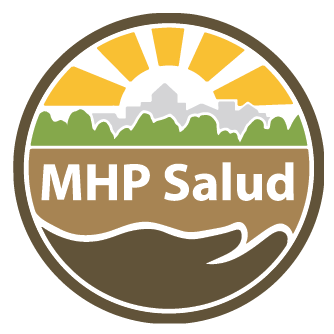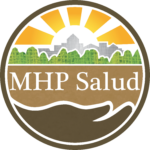Disease Prevention and Management: HIV
With adequate training and support, CHWs can provide prevention education for HIV and AIDS, while helping to reduce the stereotypes and stigmas that result from misinformation.
HIV in America
Nearly 1.1 million individuals in the United States have HIV and 1 in 7 are unaware of their status. While great strides have been made in addressing this epidemic, there are still certain subpopulations within the United States that bear the greatest burden of disease. Around 70% of new HIV infections occur among gay men who have sex with men (MSM). Many new infections also occur in the south, despite these states only containing approximately 1/3 of the nation’s population.1
Undiagnosed HIV can develop into AIDS, which left untreated, can result in death. With new advances in the treatment of HIV through antiretroviral (ART) therapy, many newly diagnosed individuals can expect to live long, healthy lives. One of the biggest challenges to managing HIV is maintaining a consistent ART (antiretroviral therapy) regimen. ART usually involves taking 3 or more drugs daily. And because the treatment does not affect everyone the same way working with healthcare providers to tailor the approach is incredibly important. In addition to managing this disease, as with many other major illnesses, individuals living with HIV/AIDs are very likely to experience depression as a result of their diagnosis.2
HIV in America’s Latino Communities
Despite only comprising 18% of the population, in 2015, Latinos made up 25% of all new HIV diagnoses in the United States. This reveals a demonstrated need for culturally appropriate sexual health education for Hispanic and Latino individuals. These disparities are created by the multiple and overlapping barriers to receiving health care that Latinos are confronted with, including chronic poverty, a lack of accurate knowledge regarding HIV, and a lack of health insurance coverage. In relation to HIV care, these barriers are linked to late or no diagnosis.4 Twenty percent of Latinos with HIV in the United States are unaware of their HIV status. Once diagnosed, only 33 percent are linked to care, and 74 percent do not reach viral suppression.5 As a result, Latinos account for 1 in 5 deaths among people with an HIV diagnosis.6
Nearly 1.1 million individuals in the United States have HIV and 1 in 7 are unaware of their status.
Despite only comprising 18% of the population, in 2015, Latinos made up 25% of all new HIV diagnoses in the United States.1
Community Health Workers and HIV Prevention and Management
Members of minority populations face formidable barriers when accessing health information, health care and social services. These barriers include language and literacy, cultural differences, transportation issues, financial barriers, and lack of insurance. These factors, among others, contribute to the lack of accurate knowledge about HIV and how to prevent it and may delay individuals from reaching a diagnosis or receiving treatment.7 Additionally, the tremendous stigma surrounding HIV and AIDS often leads to reluctance to seek testing or to talk with a health care provider, especially among communities of color.8
Community Health Workers (CHWs) are particularly well-suited to help individuals overcome these barriers by providing culturally competent health education, increased linkages to health care and social services, and successful community mobilization. With adequate training and support, CHWs are perfectly situated to provide prevention education on HIV and AIDS and related illnesses, while helping to reduce the stereotypes and stigmas that result from misinformation.
Supported by SAMHSA, MHP Salud CHWs from our Amate program conduct outreach to Latino youth and young adults aged 13-24 living in Orange County, Florida to address the stigmas concerning HIV by providing education related to HIV and substance misuse prevention. Topics include building knowledge about pregnancy, STDs, HIV, and safer sex. CHWs also help by accessing screening services, connecting participants to a care provider, and identifying and addressing needs related to the social determinants of health.
- https://www.avert.org/professionals/hiv-around-world/western-central-europe-north-america/usa
- https://www.cdc.gov/hiv/basics/livingwithhiv/mental-health.html
- Centers for Disease Control and Prevention, HIV Among Hispanics/Latinos, https://www.cdc.gov/hiv/group/racialethnic/hispaniclatinos/index.html. Accessed 6/4/2018.
- Espinoza, L., Hall, H. I., & Hu, X. (2012). Diagnoses of HIV infection among Hispanics/Latinos in 40 states and Puerto Rico, 2006–2009. JAIDS Journal of Acquired Immune Deficiency Syndromes, 60(2), 205-213.
- Sheehan, D. M., Trepka, M. J., & Dillon, F. R. (2015). Latinos in the United States on the HIV/AIDS care continuum by birth country/region: a systematic review of the literature. International Journal of STD & AIDS, 26(1), 1-12
- NCHS. Health, United States, 2012; May 2013.
- Pollini, R. A., Blanco, E., Crump, C., & Zúñiga, M. L. (2011). A Community-Based Study of Barriers to HIV Care Initiation. AIDS Patient Care and STDs, 25(10), 601-609.
- Rios-Ellis, B., Becker, D., Espinoza, L., Nguen-Rodriguez, S., Diaz, G., Carricchi, A., Garcia, M. (2015, September/October). Evaluation of a Community Health Worker Intervention to Reduce HIV/AIDS Stigma and Increase HIV Testing Among Underserved Latinos in the Southwestern U.S. [Abstract]. Public Health Rep, 130(5), 458-467.
Want more information on this initiative? Please contact us at info@mhpsalud.org
About MHP Salud
MHP Salud has over thirty years of experience implementing CHW programs and training organizations looking to start and/or strengthen their own CHW programs. For more information about MHP Salud, our services, and how we can help you, please email us at info@mhpsalud.org


